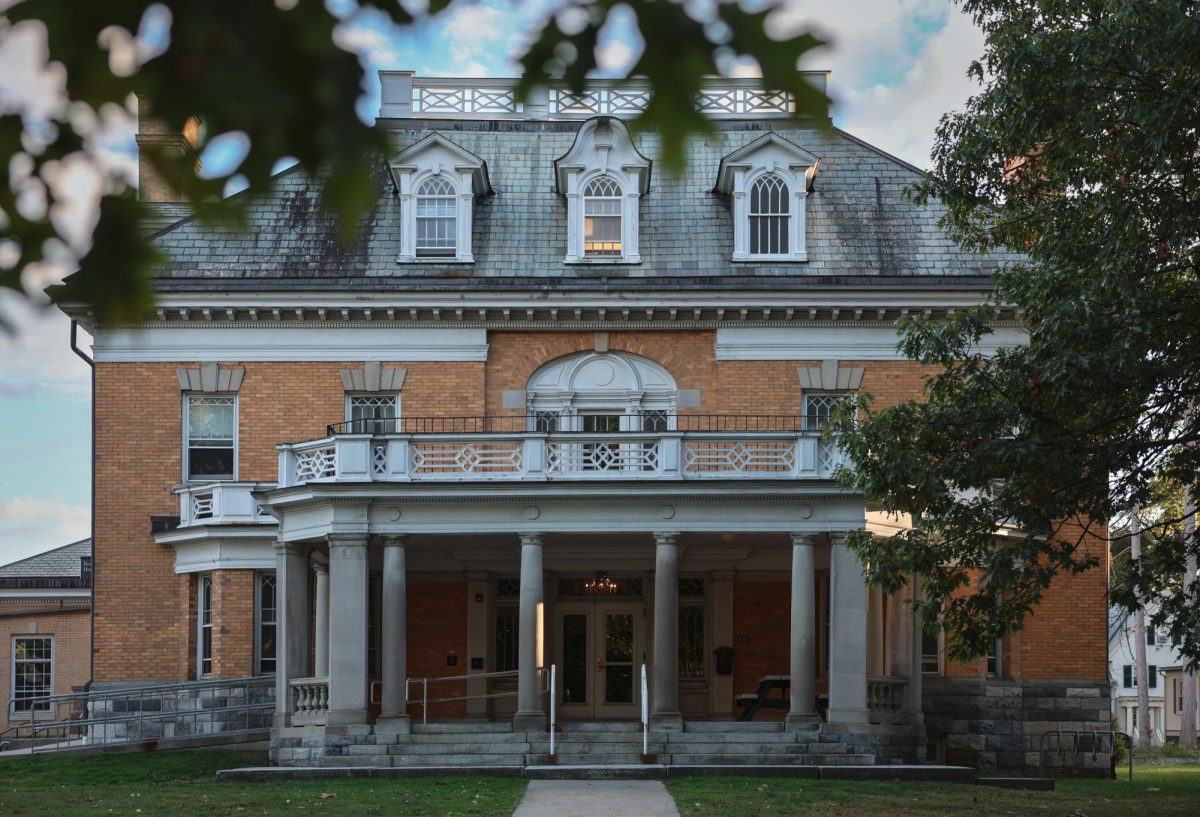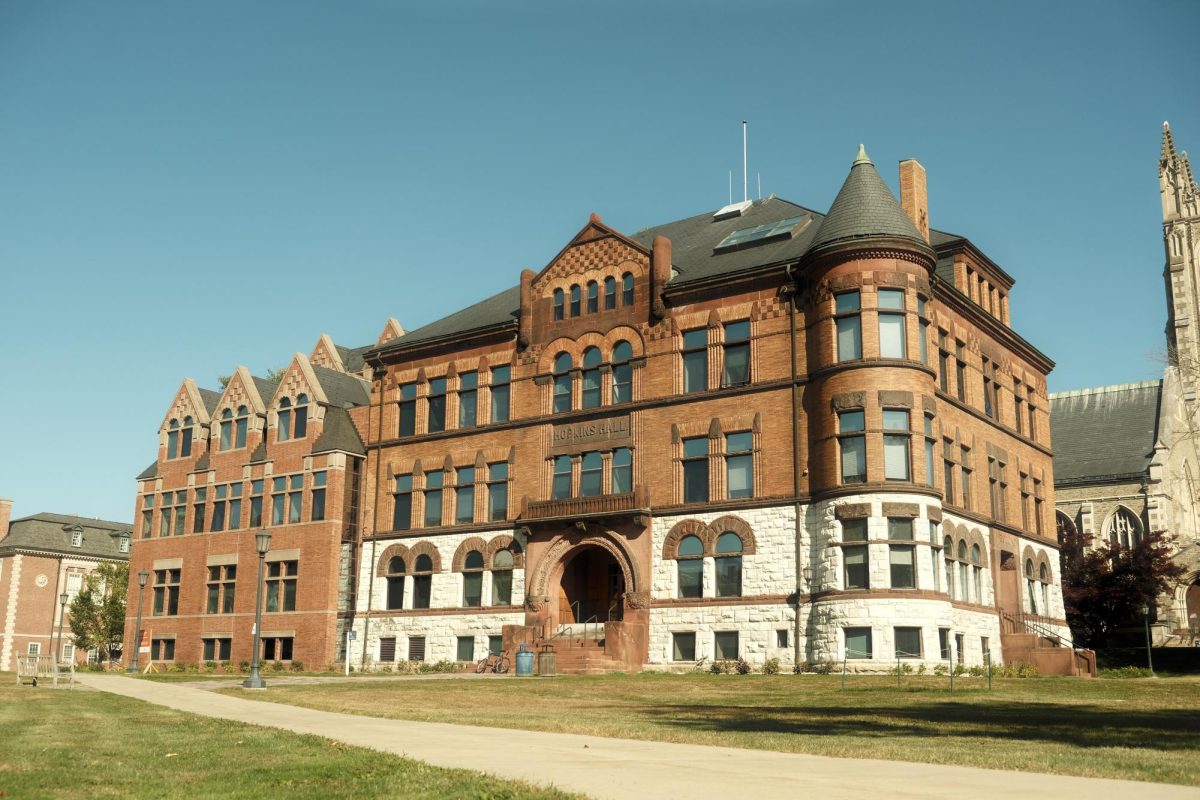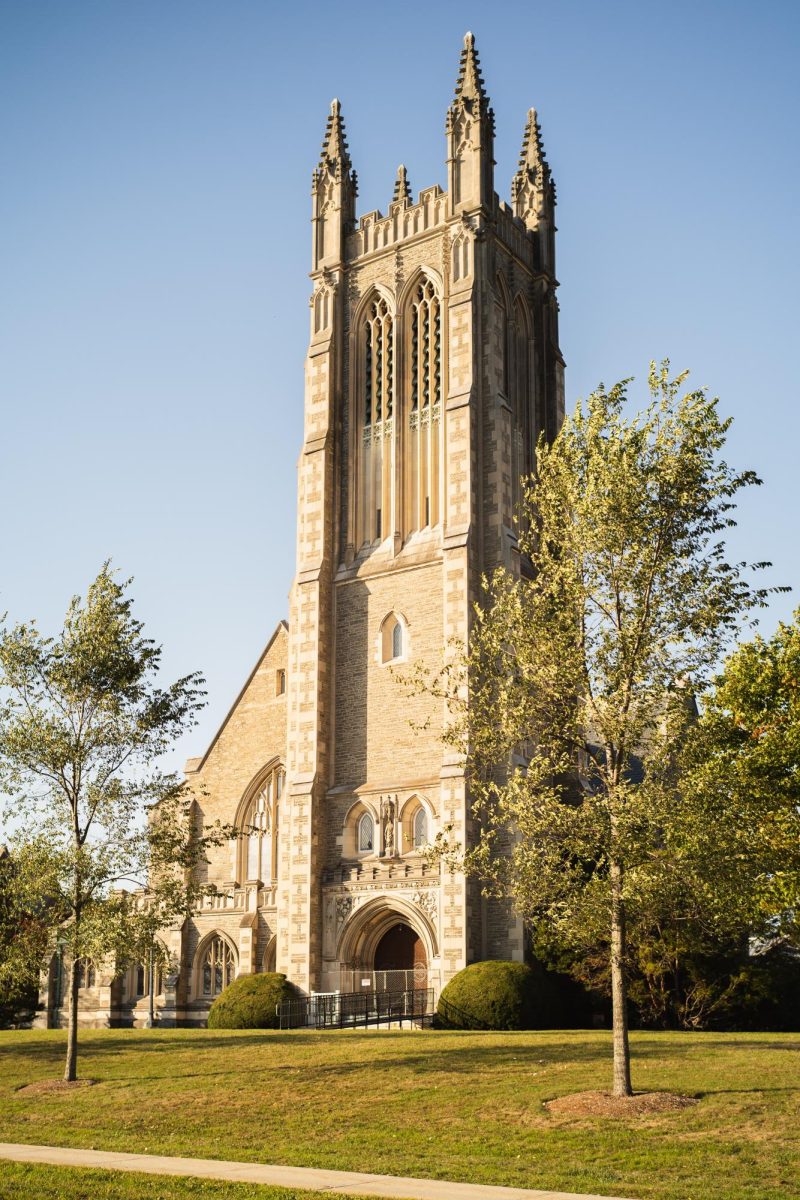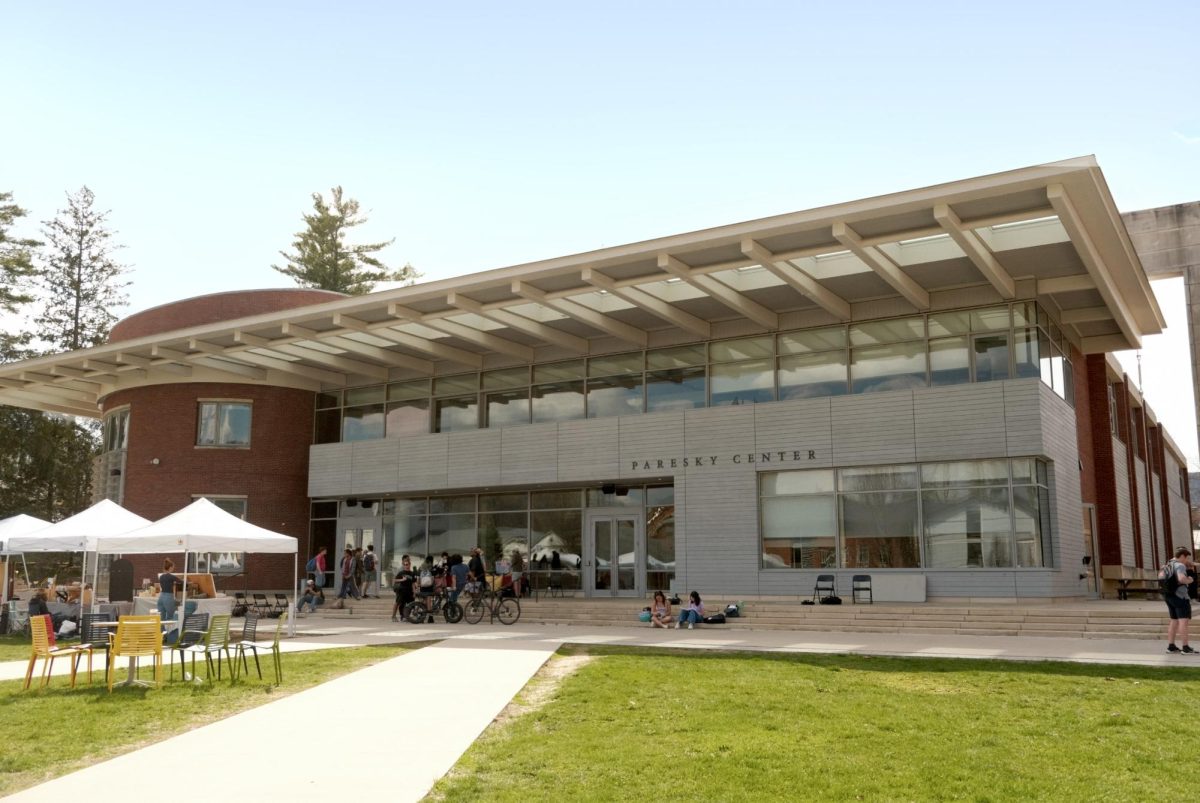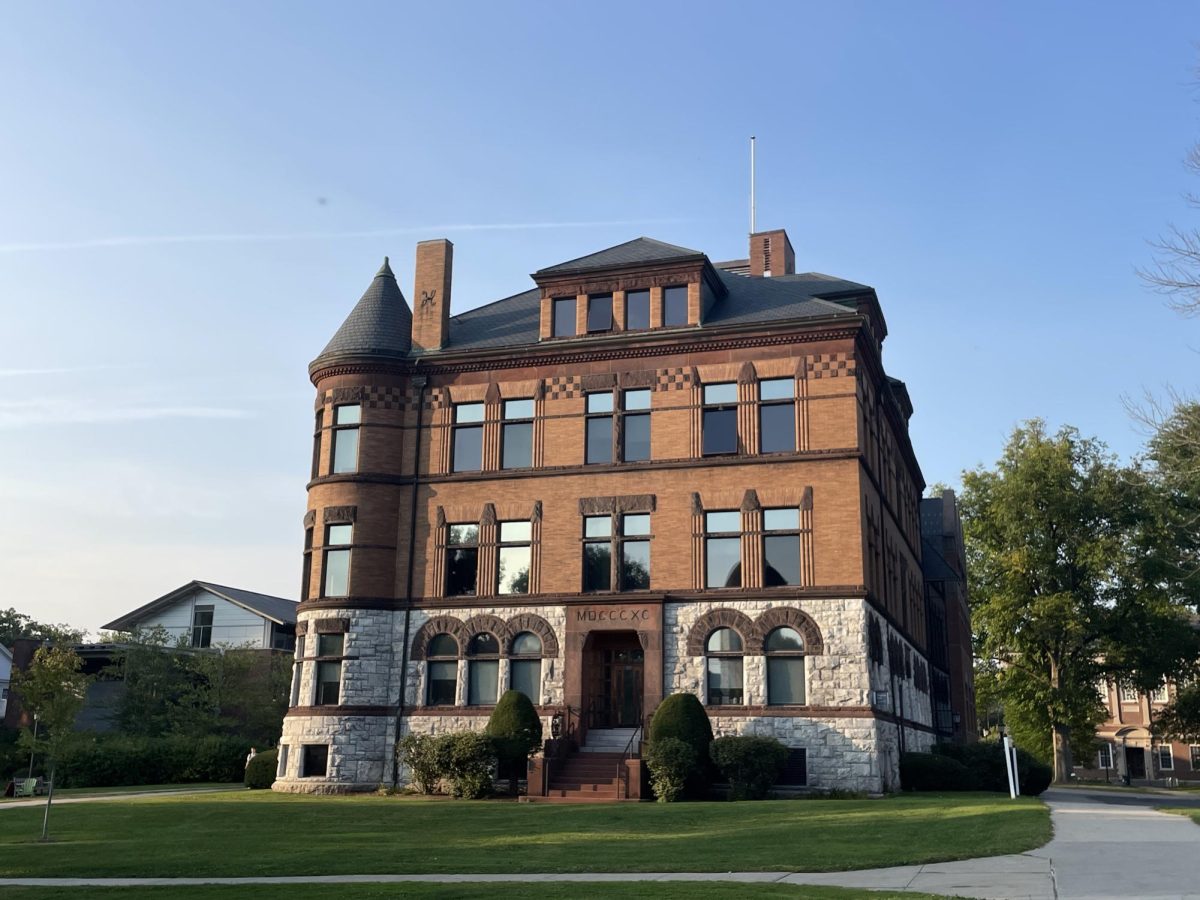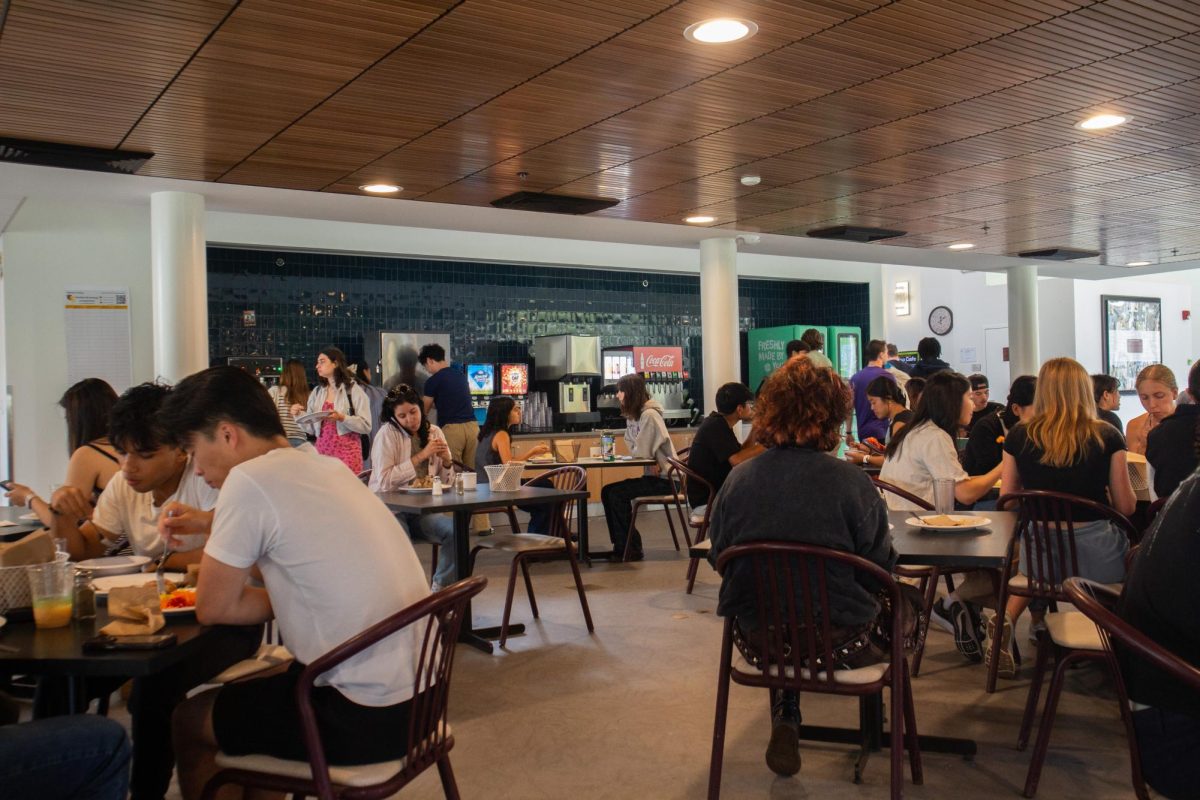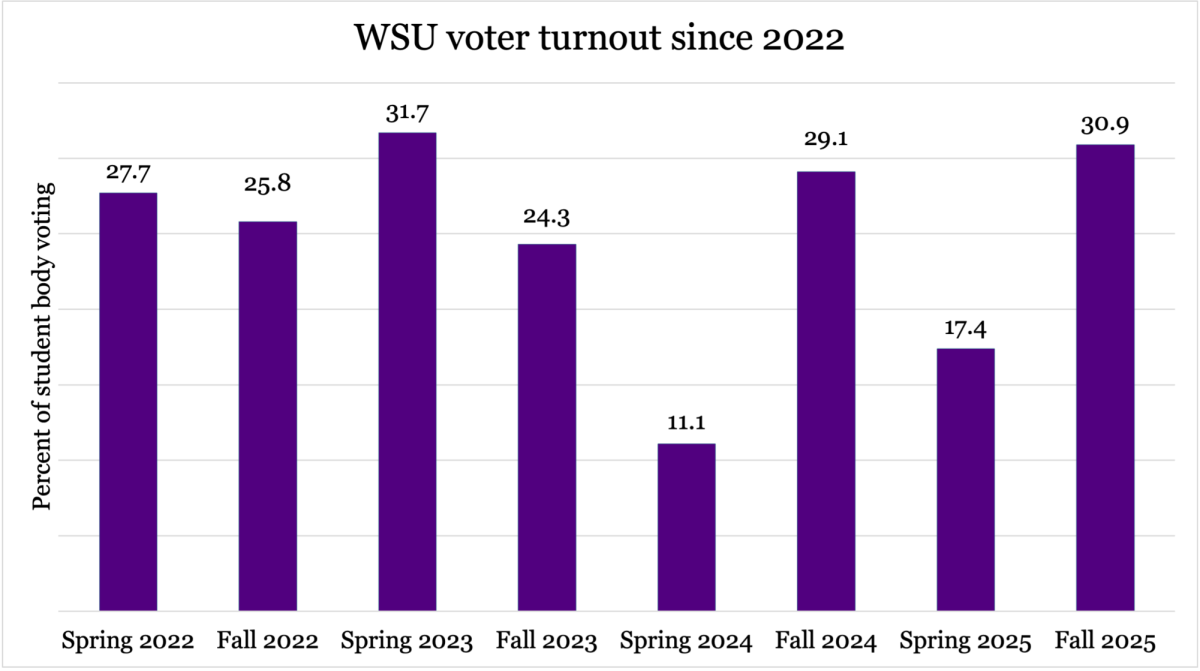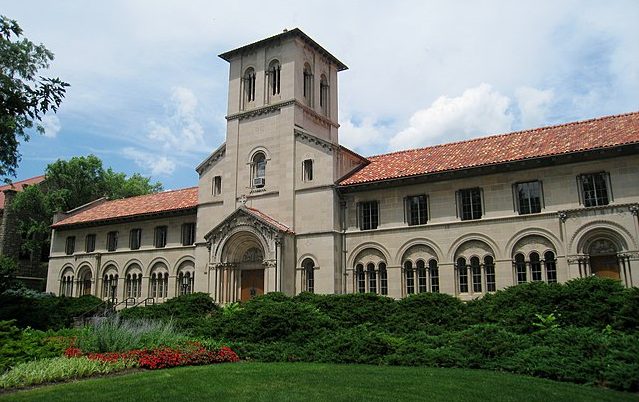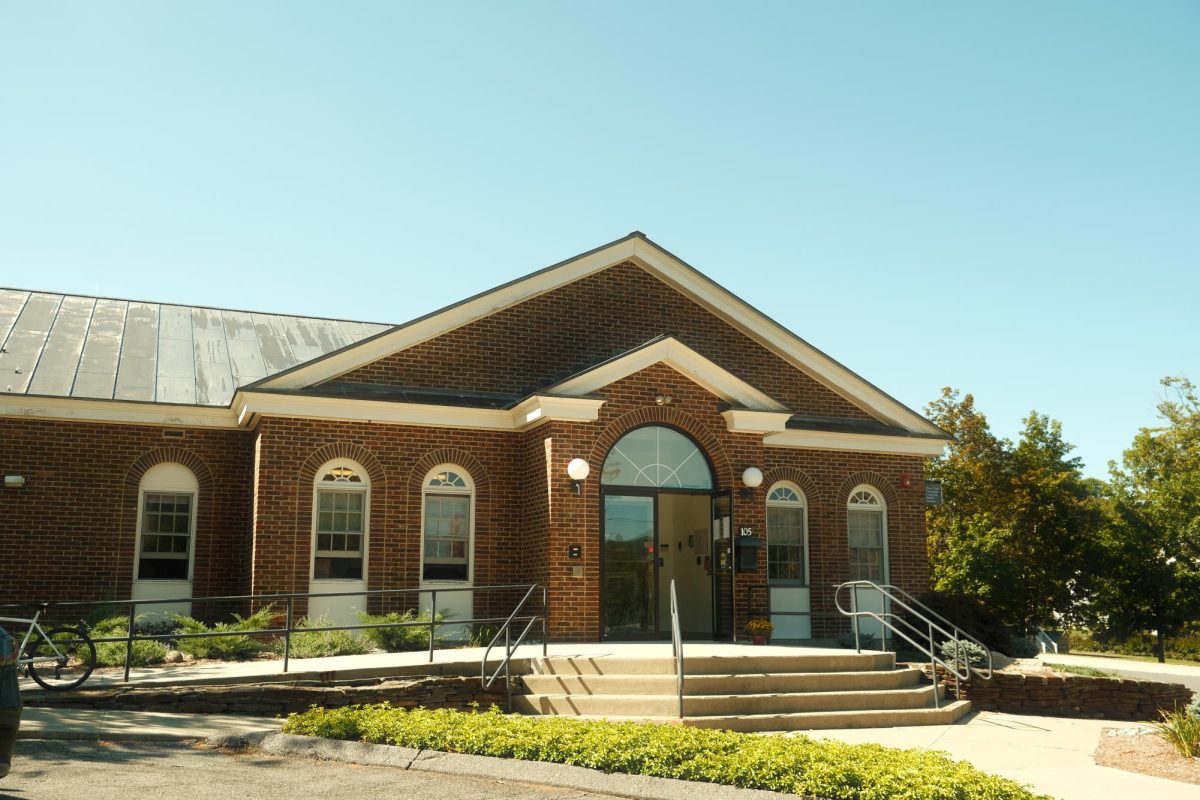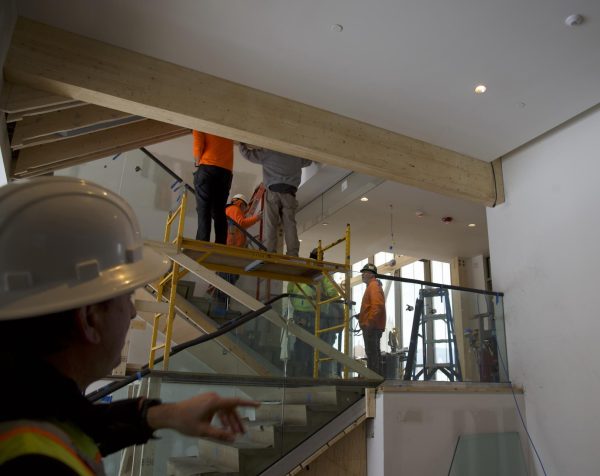
The Davis Center — a multi-building complex that serves as a home for campus programming and initiatives concerning access, equity, and inclusion — is set to reopen next month, following nearly two years of expansion. The $27.5 million project included renovations to Jenness House and Rice House, as well as the construction of an additional, yet-to-be-named building to replace Hardy House and a bridge to connect the new building to Rice.
The project’s committee, which was composed of over 20 students, faculty, and staff, kicked off the project in 2019 by hosting events and conducting an all-campus survey to solicit recommendations about how to enhance the space. Following preliminary discussions, the committee worked with the design firm Leers Weinzapfel Associates, in collaboration with J. Garland Enterprises, to draw up plans for the expansion. Construction began in March 2022.
According to Vice President for Institutional Diversity, Equity, and Inclusion Leticia S.E. Haynes ’99, the central goal of the project was to increase the Davis Center’s capacity to house student groups and campus programming. “Ensuring that the buildings could meet the programmatic needs of our community was key,” she wrote in an email to the Record.
Prior to the expansion, Davis Center Project Manager Scott Henderson estimated that each house could hold about 40 occupants — meaning that many meetings were standing room only, Haynes added. In the building that will replace Hardy House, the biggest lecture space now can hold about 200 people.
“This renewed space will allow us to center the various workshops, trainings, meetings, events, and summer and year-round academic and social programs in the DC,” Assistant Vice President and Director of Pathways for Inclusive Excellence and Co-Director of the Davis Center Clinton Williams said. “In the past, these events have been moved out of the DC for lack of space.”
The expanded complex centers around the lecture space, which Henderson termed the complex’s “core piece.” A bridge connects the newest building to Rice, joining two previously independent buildings. While Jenness is not attached to the other two buildings, it is connected to the rest of the complex by outdoor paths.
Tyler Smith ’24, co-chair of the Black Student Union (BSU), said she thought the addition of a bridge connecting Rice — which has historically been an affinity space for Black students and the BSU — to other buildings in the Davis Center complex may change the way students use the space, since other Minority Coalition groups will now occupy an adjoined building.
Smith also acknowledged that the implementation of Theme/Affinity/Program/Special Interest (TAPSI) housing over the past few years has created more affinity spaces on campus, both for Black students and other identity groups, than existed when the Davis Center closed for construction in 2022.
“There are more options for where you can host things and where students may prefer hosting things,” she said. “That will be a new, fun thing.”
According to Henderson, the committee found that the original building’s hominess was one of its most important elements to students. The project intended to maintain that sense of home, while increasing the complex’s size. “We modernized it but kept the residential scale, which was a key part of the project,” Henderson said.
The expansion also addresses what Henderson described as students’ primary wish for the Davis Center: access to kitchens. “As we talked to student groups, the number one thing that came up was cooking,” he said. Next to the lecture space, there is a double kitchen — complete with two of every appliance — in addition to an open prep island and various dining areas.
The new complex, like the original buildings, has spaces for students to complete schoolwork, including a new laptop bar that overlooks the mountains above Spring Street. The complex also houses a spirituality space with furniture and prayer blankets, as well as an ablution space across the hall with stools and faucets.
Henderson emphasized that sustainability was another central focus of the project. Unlike the old buildings, the new complex is entirely electric, and for the first time, the renovations also connect the Davis Center buildings to the College’s medium-voltage system.
The renovations also make the complex more accessible. Each building has access to an elevator, and the sidewalks around the Davis Center will not exceed a slope that would be prohibitive for wheelchair users, Henderson said.
In line with the project’s sustainability initiatives, the new complex seeks to recall aspects of the Davis Center’s and the College’s history, Assistant Vice President for Campus Engagement and Co-Director of the Davis Center Bilal W. Ansari wrote in an email to the Record. “The intentional design tells a story,” he noted.
According to Ansari, the burnt wood paneling on the side of the new building references the history of cross burnings in Williamstown and at the College, which were intended to intimidate Black residents and students throughout the 20th century. “The College’s troubled history with charred wood that once symbolized anti-Black hatred now marks a center of belonging and welcoming,” he wrote.
Inside the new building, some of the cabinets are made of white oak, a reference to the White Oaks neighborhood in Williamstown. The neighborhood once had a large Black population that was forcibly pushed out through white supremacist activity and gentrification.
Three tables in the new complex will be built using repurposed wood from Rice, paying homage to the building’s 200-year history while supporting the project’s sustainability goals. The interior design of Jenness and Rice incorporated the buildings’ old architecture with modernized elements. “We put back the [original] room layout … to preserve the history of Rice, but just bring it up to code,” Henderson explained.
Smith said that, because more than half of students on campus have never been to the Davis Center or Rice, the BSU plans to communicate the legacy and significance of the space to younger members.
“It’s a very big thing for students who have never gotten to be in the house and experience what’s possible [there],” Smith said. “A historical pseudo-teach-in about Rice is something we plan on doing before it opens.”
A formal grand opening celebration for the new Davis Center complex is slated for April after staff move in throughout the next month.






